RIDING A SUPERBIKE WITH THE SRAM ETAP AXS GROUPSET

What’s it like to ride the Madone SLR 9 with a SRAM eTap AXS, a superbike that leaves people gobsmacked when you show up to a group ride and propels you to set new KOMs and PRs all over the place?
I wouldn’t know. I am not worthy, or at least not flexible enough to ride such a bike comfortably or do it the kind of justice that some of you wicked-fast cycling enthusiasts and amateur racers are. Pity.
But, as luck would have it, my fellow tester and bullet train group ride leader Nate is. He just finished about 1200 miles in 3 months riding the Trek Madone SLR 9 Disc aero road bike with SRAM’s 12-speed wireless RED eTap AXS groupset and Zipp 303 NSW Carbon Clincher Tubeless Disc brake wheelset.
To speed things up, which is what this bike, groupset, and wheelset are all about, I’ll call it the Madone AXS NSW for short from now on.
The price? As the saying goes, if you have to ask…
Fortunately, when I inquired about testing out SRAM’s new 12-speed RED eTap AXS groupset, my contact at SRAM sent it to me with all fixins, ie. the frame, wheels, and cockpit components. Just add pedals and stir.
So, here’s Nate’s review of riding the Madone AXS NSW, as told to me, your willing (and drooling) scribe.
* * * * *
First, I should tell you that my primary road bike is a Specialized S-Works Tarmac SL4 with a Dura-Ace Di2 rim brake groupset and Reynolds Assault wheels. I’ve also got a commuter bike, a cross bike and gravel bike both with Shimano hydraulic disc brakes, a fat bike and … let me stop there. Those are the ones my wife knows about.
I rode the SRAM 11-speed wireless RED eTap for several months in the summer of 2017 on a Dogma F8 and have used both SRAM and Shimano mechanical groupsets and components over the years. I’ve built and tested other bikes, removed and replaced components to set up my bikes for different events more frequently than I care to remember, and ridden a wide range of wheelsets and other gear for In The Know Cycling tests.
I’ve been in the market for a road disc bike and have been thinking that an aero bike might be the way to go. My jam is to ride fast and climb and do a bit of road, TT, hill climb, gravel, and cyclocross racing. I also lead the 25+ mph “Bullet Train” group rides on Tuesday mornings.
So, when Steve told me the Madone AXS NSW was available, principally to check out the new SRAM eTap AXS groupset, I told him I was willing to test it out. More than willing, actually.
Let me share my take on this superbike in steps. First the frame, then the groupset, and then the wheels.
Trek Madone SLR 9 Disc Frameset
No doubt, this is a fast bike. Really fast. On this bike, I’ve been able to grab a bunch of KOMs which I’d had my sights on for a while and set new personal records on a lot of the segments I regularly ride. I’ve been able to push my group rides even more than I normally do (sorry guys). It definitely saved me time during our team time trial this summer.
I’d estimate the bike alone gives me an extra 1-2 mph in an all-out sprint and probably 0.5-1 mph in a 30-minute TT effort, relative to my 5-year old Tarmac on flat ground.
This thing also looks fast and aero. Just check out those tubes and bars!
In addition to looking and being flat out fast, the Madone handles nicely, turns precisely, is confident in corners at speed, and feels very stable everywhere on the road.I typically shy away from crit racing, but cornering on this bike had me reconsidering that choice.
It’s also supple and comfortable. Between the Zipp 303 NSWs that I ran tubeless at 80psi and the frame, the Madone takes up bumpy spots in the road far better than most other bikes I’ve ridden.
The Madone is clearly an aero race bike and does well in all but windy environments. While I’ve found the current and prior generations of Zipp 303 NSW wheels to be quite good in crosswinds, I was tossed around a bit more than expected with them on this bike. I was left wondering if the larger lateral cross-section of the frame and perhaps the 160mm discs contributed to feeling the crosswinds more on the Madone than with the same wheels on my Tarmac with its smaller, rounder tubes.
The Madone is also clearly not as stiff or responsive as the Tarmac. It doesn’t have that snappy, springy response when stomping up a hill and it feels sluggish at 17.1 lbs when my Tarmac is closer to 15. Perhaps you have to give up some responsiveness to get a bit more speed with even a top-of-the-line model like the Madone.
There are a couple of design details about the Madone that I wasn’t crazy about.
First, the integrated and proprietary handlebars, while providing a clean look and an undoubtedly aerodynamic profile, doesn’t have a wide-enough or flattish section in the drops to help distribute weight more evenly over the entire hand. Instead, the negative curve puts more pressure on the inside and outside of your palm.
Second, the seat post adjustment bolts tighten counter-clockwise. That’s fine in and of itself but when you tighten the screws, the heads push up against a thin strip of carbon that’s part of the IsoSpeed seat mast system. A design to have the screws push up against metal would seem more robust. If you overtighten the 5NM spec and crack the strip… well, you don’t want to do that.
Being conservative with the torque on the first couple rides, I undertightened the screws and found the seat gradually sliding down over the course of the ride. Tightening a bit more to prevent slipping just felt very risky knowing that a thin strip of carbon fiber was taking all the load.
You could likely overcome these design choices with some customization and care. At the same time, the whole trend to integrated cockpits takes away the range of options in handlebar width and shape, stem length, spacer height, and seat posts that allow fit optimization.
For sure, Trek offers some cockpit fit options but they just aren’t as many or as wide as they were in the pre-integrated era.
Those are nits that you can pick and pale in comparison to the combination of speed, handling, and comfort that create a very high level of confidence in the Madone as a superb aero bike.
The 2020 model Madone SLR 9 Disc eTap AXS (see and order it here on the Trek website, and support In The Know Cycling when you do) comes in three different color combinations you see below.
It also comes “stock” with the Bontrager Aeolus XXX6 disc brake wheelset. We reviewed the rim brake version of the XXX6 alongside other aero wheels here.
For the matte black and glossy viper red frameset that was used to build the Madone SLR 9 I rode for this review, you can see and order it here. The Zipp 303 NSW disc brake wheels on this bike are reviewed later in the post.
SRAM RED eTap AXS
Like it or not and despite a lot of years in the game, SRAM is still the new guy on the block when it comes to road groupsets. They seem to work hard to differentiate themselves from Shimano and Campagnolo, in part because those two old-timers have patents that essentially require SRAM to come up with different component designs to avoid infringing on those patents.
The result over the years has been an innovative set of SRAM shifting approaches and is once again with the original eTap and new eTap AXS.
Wireless, 12-speed, wider shifting ranges, left-easier-right-harder shifting, programmable shifting, and component integration are the eTap and AXS innovations that catch your attention.
Do these and other headline-grabbing features matter in the experience and performance of the Madone? Are they game-changers or deal-breakers among them? Taken together, how does the AXS experience and performance compare against the Shimano Di2?
Let’s look at the key parts of the eTap AXS groupset and how they perform.
Shifting Logic
How you shift eTap – click right for a harder gear, left for an easier one, both to move from one ring to the other – is the most intuitive and natural shifting logic versus the Shimano electronic groupsets, given that their logic is designed to mimic traditional mechanical shifting with two buttons on each shifter, right buttons for rear derailleur, left buttons for front derailleur. It takes no time to learn and it makes shifting so simple that it makes me wonder, why didn’t someone come up with this sooner?????
The only downside of the eTap shifting logic has nothing to do with eTap. You need to consciously refresh your muscle memory to switch between the eTap and the far less logical Shimano or Campy shifting logic if you switch often between bikes, say your good aero road bike with the eTap AXS vs your commuter or gravel bike without them.
I’m not sure if the IP and patent lords would allow SRAM to put a second shifter lever on each side so you could program your eTap to run just like Shimano or Campy. That would make life a bit easier for those of us who go back and forth between bikes with different shifting logic now.
Then again, putting PC based Windows and even Office programs on the Macs never worked out very well and robbed you of the simplicity and superiority (for most non-work environments) of Apple’s more innovative GUI and software.
Shifting Speed
Unfortunately, the eTap shifting itself isn’t as smooth and direct as what I experience with my Dura-Ace Di2. I’m not clear on whether this is an electronic or mechanical thing. eTap also feels clunky, especially when doing it under the load of a hard effort.
eTap’s shifting speed is probably the biggest complaint I have about the AXS system. It’s simply a fraction of a second slower and clunkier than my Di2. It’s a day to day annoyance for the user.
What’s the practical effect of this slower, less smooth shifting? I find myself needing to take the torque off the cranks a tad longer when shifting with eTap.
Sure, if I only knew eTap AXS, I’d probably become used to it. But life, and expensive cycling components purchases are full of choices.
Programmability
eTap and Di2 give you the ability to program the shifting to make for more sequential jumps regardless of what combination of rings and cogs you are in. Mostly this means auto shifting the front derailleur in combination with the rear when you usually manually shift the rear and only occasionally shift the front.
You don’t have to use this feature, and you might or might not like it if you do, but it’s there for you.
I like that SRAM has embraced Bluetooth configurability. This along with the AXS user interface and app are all now better than they were with the original eTap and way better than what Shimano’s Di2 gives you. Shimano’s configuration software simply feels very out-dated in comparison to SRAM’s, especially with expectations today that smartphone apps be continuously improved for useability, speed, and features.
That said, I’m not sold on the “enhanced mode” that makes some of the ring and cog choices for you from either SRAM or Shimano.
Shifting the front derailleur requires a bit of extra mental attention. You want to decrease your torque slightly longer than you would for the rear mech. When you are in the enhanced “self-shifting” mode and the eTap makes the choice to shift the front d to smooth out gear ratio transitions, you don’t know it until it’s underway. That can lead to so gnashing of gears during the shift and interrupt your pedal stroke as you react and back off at the sound and feel of that gnashing.
There were some cases where I liked the software making the choice for me, like when it went from the small to the big ring as I came over the crest of a hill and wanted to keep my pedal stroke and power level the same. If you are on a multitiered climb with short flat sections, however, I found it rather silly to be shifting to the big ring for that short plateau and then go back to the small ring almost right away when you hit the next ramp a hundred feet or so further.
On the flip side, I prefer not to have the program shift for me from the big to small ring. This is usually more of a “bail-out” mode for me and I prefer to make this move intentionally rather than let the software decide, since in this case I am wanting to make a larger jump to a super easy gear when a hill gets very steep.
If I was the SRAM software development king, I’d add the
option of enabling this auto-shifting for one chainring shift direction instead of both or neither, as it is set now. Since I don’t have this authority and I can’t get it to go one direction only, I chose to just have the FD under my own control all the time.
AXS Range
One of the things SRAM promotes about the eTap AXS is the 12th gear and the wider gearing range it and the rings and cogs give you. The idea is that you can ride your bike with one groupset across a greater variety of terrain without having to change out your chainrings or throw on a different cassette for the kind of ride you have planned.
From my perspective, I’d say the 12th gear and extra range is a qualified plus. Having the 10T sprocket opens a door to a big ring with fewer teeth, which allows you to use your small ring less.
For 2 ring or “2x” configurations like the 48/35T x 10-28 RED eTap AXS on this Madone that is designed mostly for flat and rolling terrain, the added range is incrementally nice to have but not something I got super excited about. And on this type of terrain, I didn’t find myself riding in the big ring any more than I have with my mid-compact 52/36 and 11-28 cassette DA Di2.
The tradeoff of not being able to use your current “quiver” of wheels (if you can afford this bike or even this groupset, you likely have a quiver) without changing out the unique freehubs and cassettes required by the AXS (on those wheels that you can) would seem to be a hassle and expense that probably doesn’t justify the benefit from the added range.
I admittedly prefer to spend most of my time in the large ring with any groupset and fortunately have enough of a strength to weight ratio to do it without my cadence dropping off. Your own preferences and power may have you going between the big and small chainrings more often. If so, the eTap AXS with its smaller big ring would certainly help you stay in the big ring longer and have to use the front derailleur less. This would make the AXS more attractive to you.
If you were equipping more of a climbing bike and had enough quick terrain changes to justify a 1x, I think the added range, smaller ring, and 12th cog would be a bigger asset. But even as I do more gravel riding and especially for gravel racing, I see the 2x set-up still winning out for all but the steepest and gnarliest of courses.
AXS Jumps
Another feature promoted by SRAM is the smaller jumps or changes in the number of teeth between when you shift between your rear cogs.
In reality, this is a bit of a yes-and-no feature. Yes, SRAM has reduced the jumps between prior SRAM cogs in the smaller or harder end of the cassette in part because they’ve added the 10T. But no, the jumps between cogs beyond the middle of the cassette up into the larger, easier end remains quite large and especially so since they’ve added to the range with bigger cogs with more teeth at the top end.
At least that’s the case on this bike. I can see where they might offer a cassette with smaller jumps at some point but that works against the bigger range and 12th cog innovations that SRAM is leading with.
As someone who likes to stay in the big ring as much as possible on everything but the biggest climbs, I would prefer smaller jumps at the large cog/more teeth end of the cassette than offered with the AXS and available with 11-speed groupsets.
Yes, I welcome smaller or intermediate jumps if I used the smaller chainring more, but then I’d be constantly shifting both derailleurs to find the right ratios. Maybe that’s where the auto-shifting would help out. But, as I mentioned earlier, that has some drawbacks especially under the kinds of loads I’d be putting to the pedals going uphill.
At the lower end of the range (<17T), I didn’t really notice the small gaps. Perhaps I would have if I were a TT specialist on slightly undulating terrain. The important thing for me is that I haven’t given up any ratio in the highest/hardest gear combination. The 48/10 of the eTap AXS is only slightly higher than the 52/11 on my mid-compact DA Di2.
eTap AXS Brakes
I have little to say about the AXS brakes… and that’s probably a good thing. If they didn’t work well or the modulation wasn’t great or they were overpowered, I’d probably have written about this earlier in the review. Disc brakes are so much better than rim brakes that I just don’t think about disc brakes anymore whether it’s on this Madone or on my gravel, CX or fat bike unless there’s a problem or they stand out.
Ergonomics is an issue you should consider if you have smaller hands. The integrated shifter/brake hood on this groupset is on the large size compared to the DA and even Ultegra Di2 hydraulic ones. The initial reach set-up of the brake levers was also a bit longer than I would have thought for the average hand size but you can adjust both the reach and throw to your liking.
AXS Crankset and Quarq Power Meter
The crankset includes an integrated Quarq power meter, a very sweet design. Unfortunately, and perhaps because of this integration, the crank arms seem to be slanted outward slightly less than with other cranks. This made the width at the bottom bracket wider than other cranks I’ve been using and gave me more rub on the inside of my foot and ankle.

A highly accurate and consistent Quarq power meter is neatly integrated into the AX crankset, something Shimano has yet to accomplish with their own PM
I used the same shoes, cleats, and pedals as on my other bikes including my Tarmac with SRAM Force cranks. With shoe covers on my feet during an early spring ride on the Madone, I wore holes through the covers near my ankle. Not quite a deal-breaker but something to work with your fitter on if you have particular requirements, for example on hip-width or spindle length.
Where the eTap AXS Stands Out
If I were to summarize the bottom-line advantages of the RED eTap AXS, I’d say there are as follows:
- Shifting logic – I wrote about this above; a carryover from the original eTap.
- 1X range – If you plan to go with a 1X groupset, SRAM and the eTap AXS is the best one out there right now.
- Separate batteries – While they don’t last as long as the Di2 battery, there are two of them and you can always move the one on the front derailleur to the back if it runs out. You can also carry a spare.
- Installation – Wireless makes the eTap quicker to install if you are planning to build the bike. This is a one time benefit or an occasional one if you tend to be a wrench moving things between bikes. Wireless makes no difference in and of itself and some believe it contributes to the slower, clunkier shifting I experienced. It can look cleaner compared to wired shifters if you don’t have internal wiring or you can’t hide the wires under your bar tape. And the hydraulic brake lines are still visible. They aren’t wireless, at least not yet.
- Better UI/App – As with installation, this isn’t something you’ll do very often. But, if you like to tinker around with your settings, the AXS UI and smartphone app is a winner.
We haven’t tested it yet but SRAM introduced a FORCE eTap AXS groupset at a lower price shortly after introducing the RED. I’m sure there are differences in weight, materials, power meter integration and other things, but the biggest difference is price.
You can see and order the RED and FORCE groupsets while supporting the detailed and independent reviews we do at In The Know Cycling by clicking and buying through these links to top-ranked stores Competitive Cyclist and Merlin Cycles and to other recommended stores using Know’s Shop.
In The Know Cycling supports you by doing hours of independent and comparative evaluations to find and recommend the best road cycling gear and kit to improve your riding experience.
You can support the site and save yourself time and money when you buy through the links in the posts and at Know’s Shop to stores I rank among the best for their low prices and high customer satisfaction, some which pay a commission that helps cover our review and site costs.
Click here to read about who we are, what we do, and why.
Zipp 303 NSW Carbon Clincher Tubeless Disc brake Wheelset
Steve and fellow tester Miles have reviewed the Zipp 303 NSW Disc brake wheelset that came with this Madone SLR 9. Now I’ve had the opportunity to spend some good time on them.
Here’s our current review of the Zipp 303 NSW Disc Brake wheelset.
While you can’t ascribe human emotions to inanimate objects like bike wheels, I can tell you how I feel riding them. When it comes to riding the Zipp 303 NSW carbon clincher tubeless disc wheelset, I get a comfortable, confident thrill I don’t often experience from the performance of other wheels.
You wouldn’t think feelings like comfort and thrilling happen at the same time or that you can be confident in pushing yourself to the limits where thrills are usually found. Yet for me, someone admittedly filled with my own contradictions, I experience comfort, confidence, and thrills at the same time from the performance of this versatile carbon disc wheelset from Zipp.
Let me explain.
As to comfort, these 303 NSW carbon disc hoops combine smooth and quiet rolling with great compliance. The rear hub freewheels without even a whisper. The wheels absorb rough roads, cracks and even shallow holes with hardly a notice.
Part of that comfort probably comes from being optimized for tubeless tires. More than tubeless-ready or having tubeless as part of a crazy long name – Zipp 303 NSW Carbon Clincher Tubeless Disc Brake – the rim bed has shallow, narrow channels near the outsides of the rim beds to better secure the tire beads under the rim hooks when running tubeless tires at lower pressures.
I set these wheels up with 25C tubed clincher tires and 25C and 28C tubeless from multiple brands. Tubed tires like the 25C Continental Grand Prix 4000S II were a bear to get off. I wouldn’t want to have a flat on the road with tubed tires on these rims unless I was riding with Scott, whose hands are the size of a bear’s.
The tubeless Schwalbe Pro One and Zipp Tangente Speed tires were easy to install and remove. If ever I needed to put a tube inside them due to a sidewall cut too big to close with sealant, it’d be an easy job.
Zipp claims these wheels test fastest in the wind tunnel with a 28mm tire. I found, however, that Zipp’s 28C Tangente Speed Road Tubeless tire, a model whose 28C and 25C sizes typically set up narrower than Schwalbe Pro One, Mavic Yksion Pro UST and other tubeless tires I recently reviewed, measured 1 mm wider than the roughly 29 mm wide rim.
Zipp’s rim shapes have obviously changed as they’ve moved to the newer and wider NSW wheels. Their tech support representatives tell me the 95% tire to rim with rule Zipp established a decade ago and other brands have followed no longer applies to the NSW rim shapes. They didn’t tell me what their new rule is though, perhaps wanting to keep that secret sauce secret. Most other leading aero wheel designers still go by the tire-narrower-than-rim-width principle and have publicly shared the aero data to confirm it.
While riding these wheels with 28C tubeless tires is supremely comfortable, I found the 25C Schwalbe Pro One tubeless tire that measures essentially the same width as the 303 NSW rim and the 25C Tangente Road Tubeless tire that measures about 2mm narrower both provide great comfort in combination with these compliant wheels.
While I spent most of my time on the roads, a couple of outings one of my fellow In The Know Cycling testers took with this 303 NSW road disc wheelset on combined paved and dirt roads showed their versatility to be better than most.
Wide rims and wide tires usually lead to good handling. The handling on these wheels was better than good. It took me to the extremes of confidence in cornering and made me darn near fearless. I never doubted them in tight turns and I pushed them as hard as I can. That was a thrill right there.
Responsive? Yes. Acceleration? Beam me up Scotty. Aero? Held my speed well. Crosswinds? Bring ’em on. Not a bother.
For me and my mere 150lb/68kg body weight, they were plenty stiff and climbed well. They also handle beautifully going fast downhill with never a worry about speed, cornering, wind or road surface.
Beyond how this Zipp 303 NSW disc brake wheelset performed against all of these criteria, and they did as well or better than most other all-around carbon disc or rim brake wheels I’ve spent time with, I just found these a joy to ride and really looked forward to it. That was a thrill in itself.
Of course, being Zipp’s top-of-the-line carbon disc wheelset model, it’s not a cheap thrill. But if you are up for all that I experienced, you can get these wheels by clicking through to Competitive Cyclist for US/CA residents and Tredz where you get 10% off with exclusive code ITKTDZ10 or Merlin for those living in the UK/EU.
You can read my evaluation of other wheelsets in this category in the post The Best Carbon Disc Wheelset.
* * * *
Thank you for reading. Please let me know what you think of anything I’ve written or ask any questions you might have in the comment section below.
If you’ve gotten some value by reading this post or any of the reviews or comments on the site and want to keep new content like this coming, click on the links and buy at the stores they take you to. You will save money and time while supporting the creation of the unique combination of independent and in-depth gear reviews we do at In The Know Cycling.
If you prefer to shop for your cycling gear at other stores, you can still support the site and new post creation by taking a Paypal pull here or by buying anything through these links to eBay and Amazon.
And please, let’s stay connected! Use the popup form to sign up to get an email when new posts come out or the icons at the top to follow us on Twitter, Facebook, and Instagram or get post summaries sent to your RSS reader.
Thanks and enjoy your riding safely!
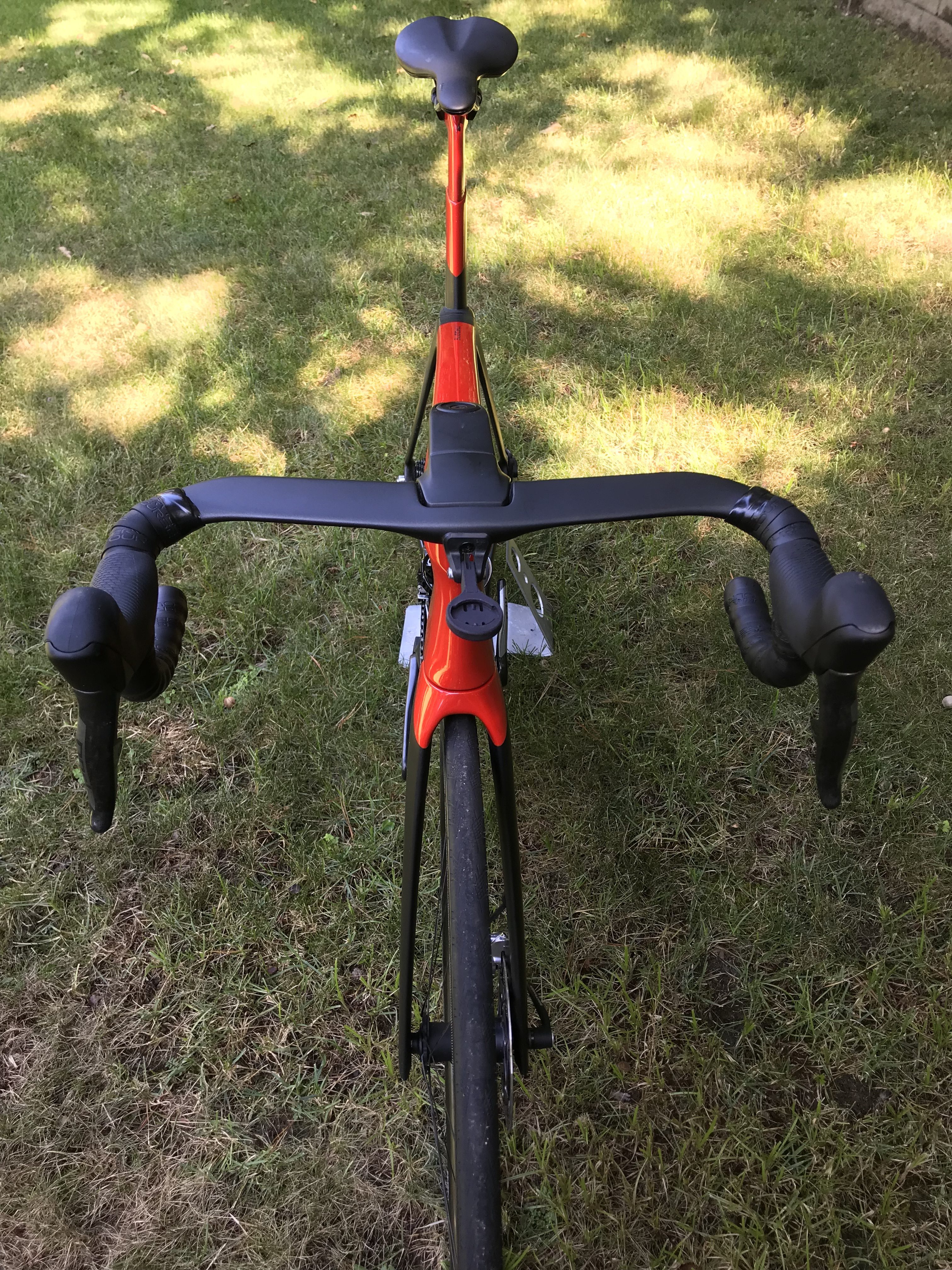
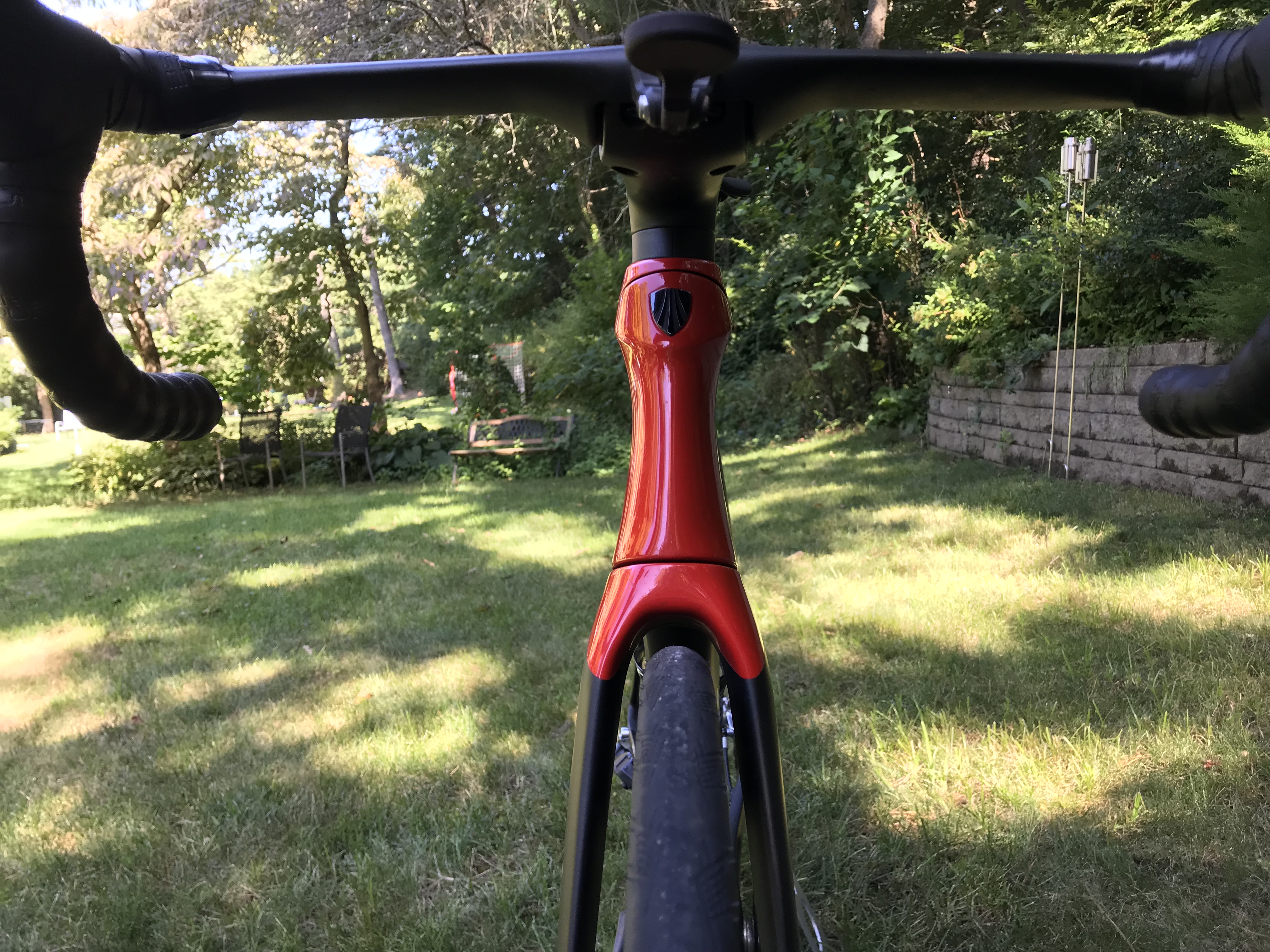
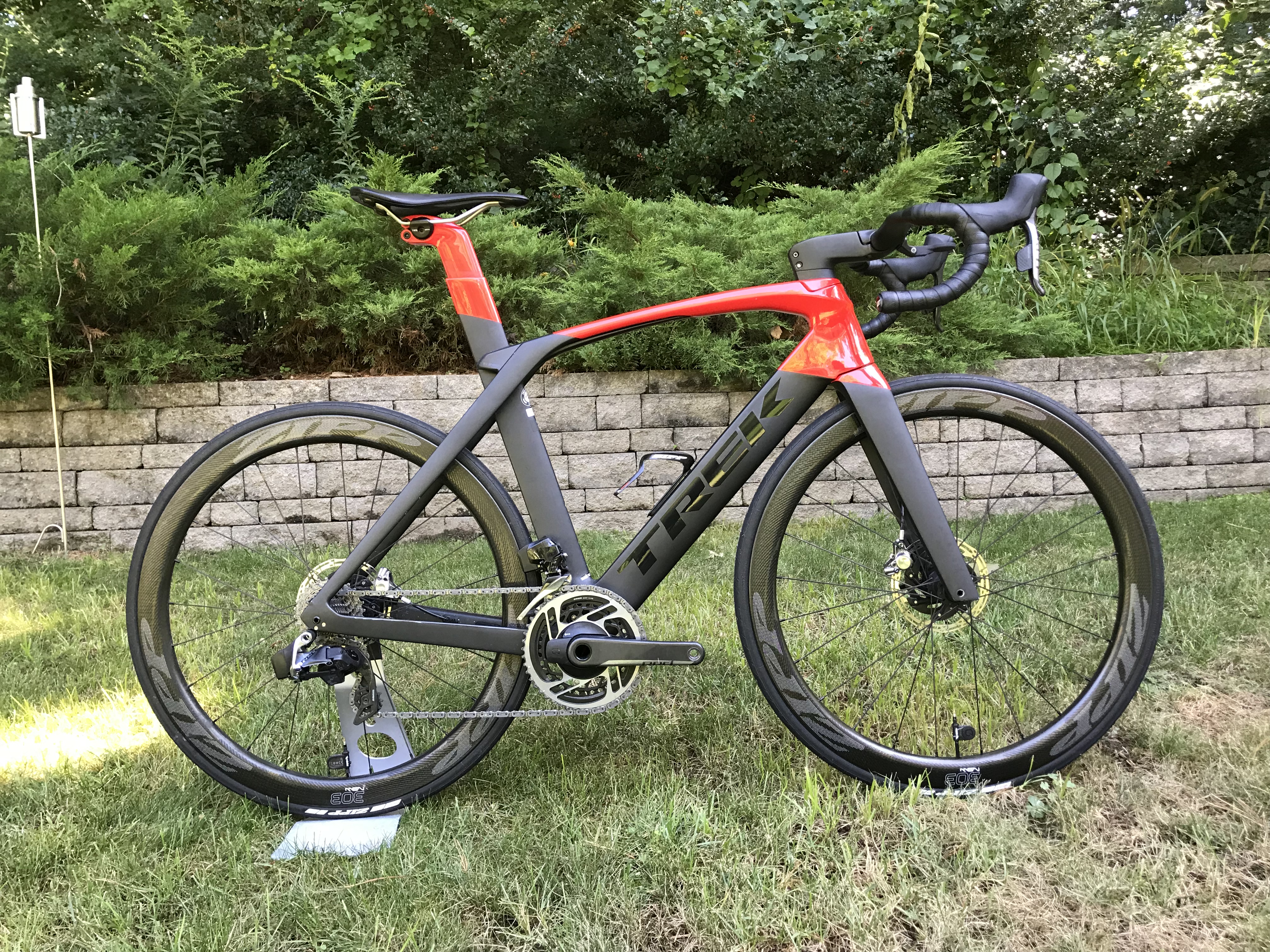

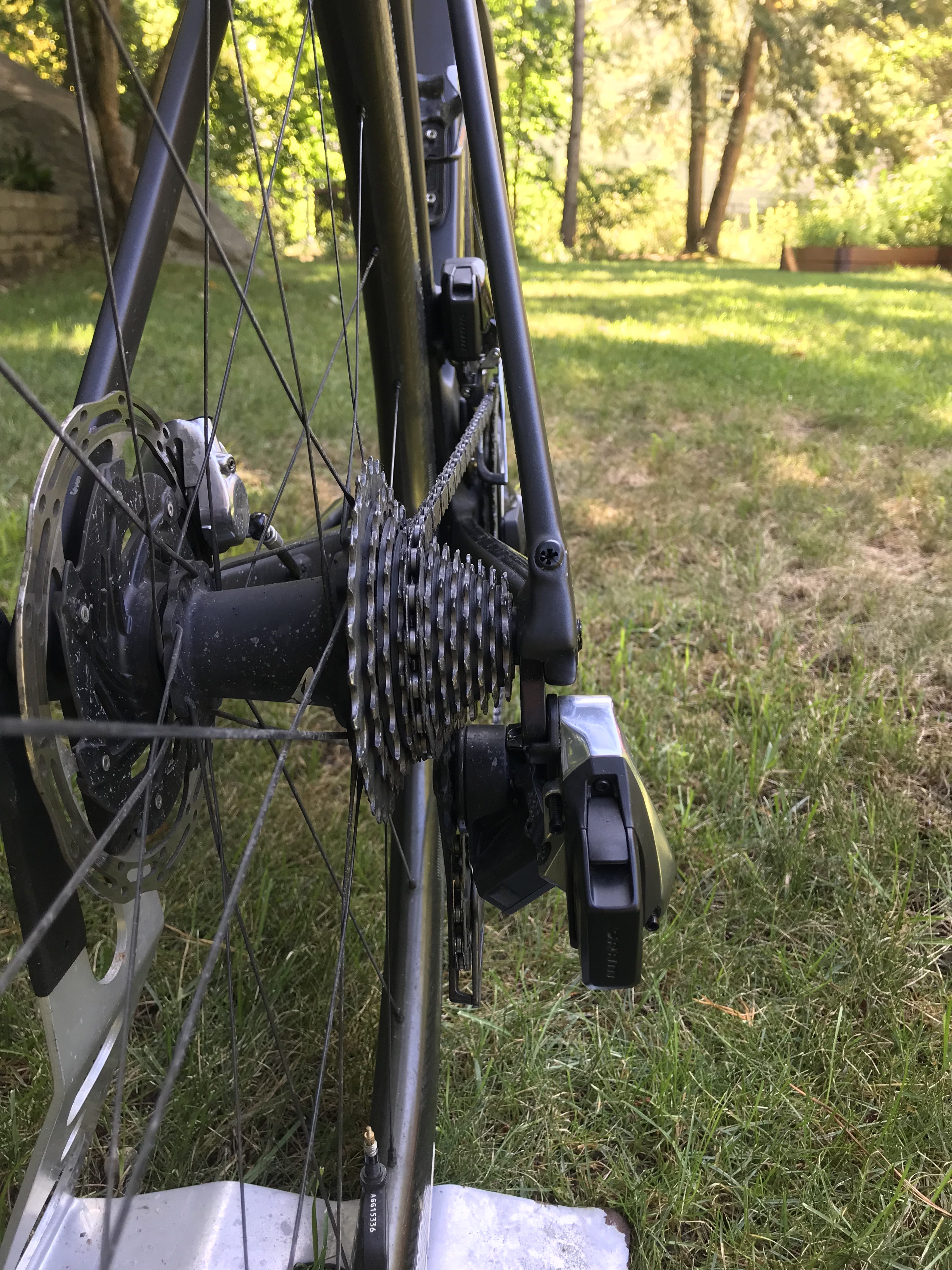
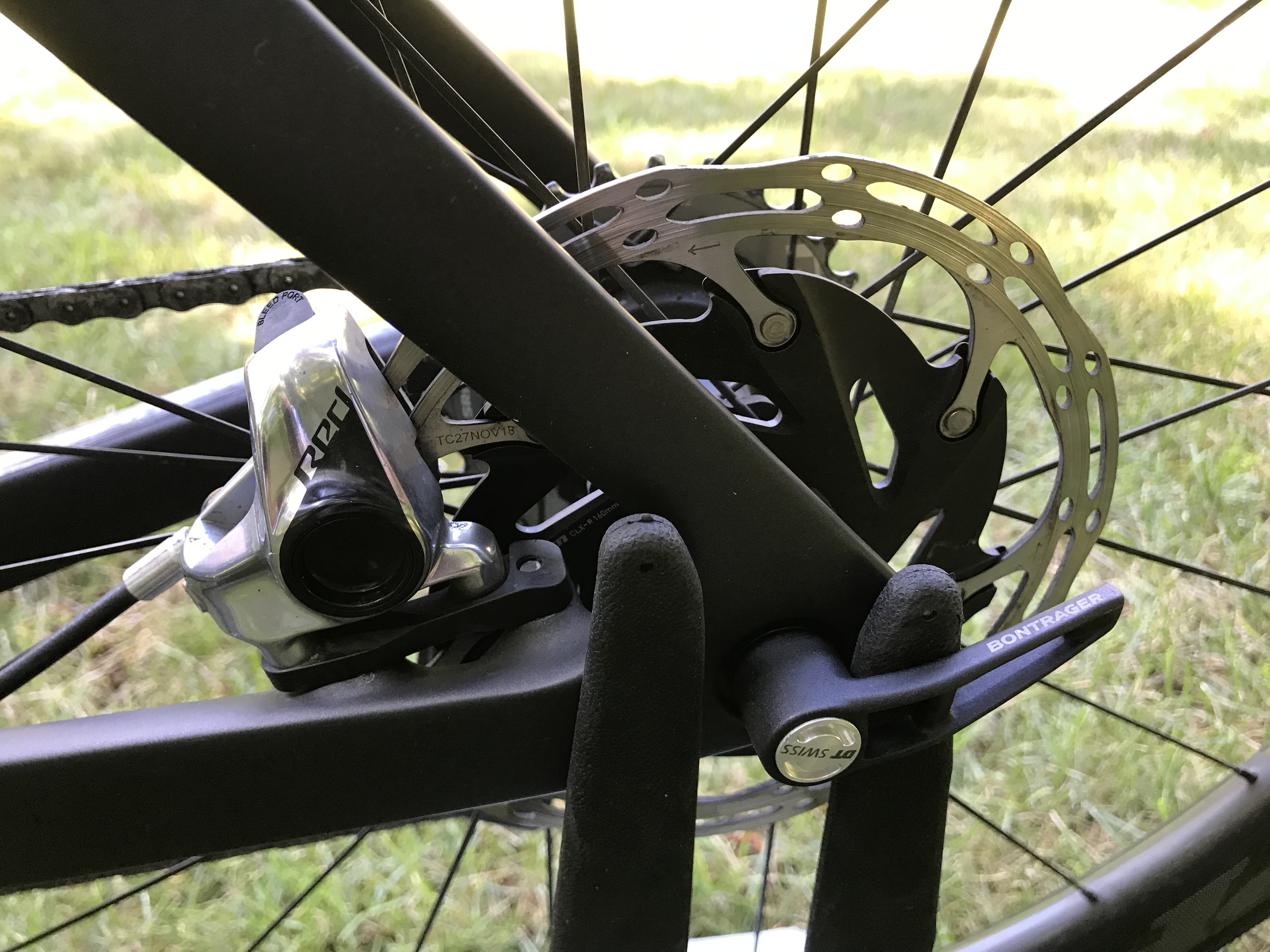
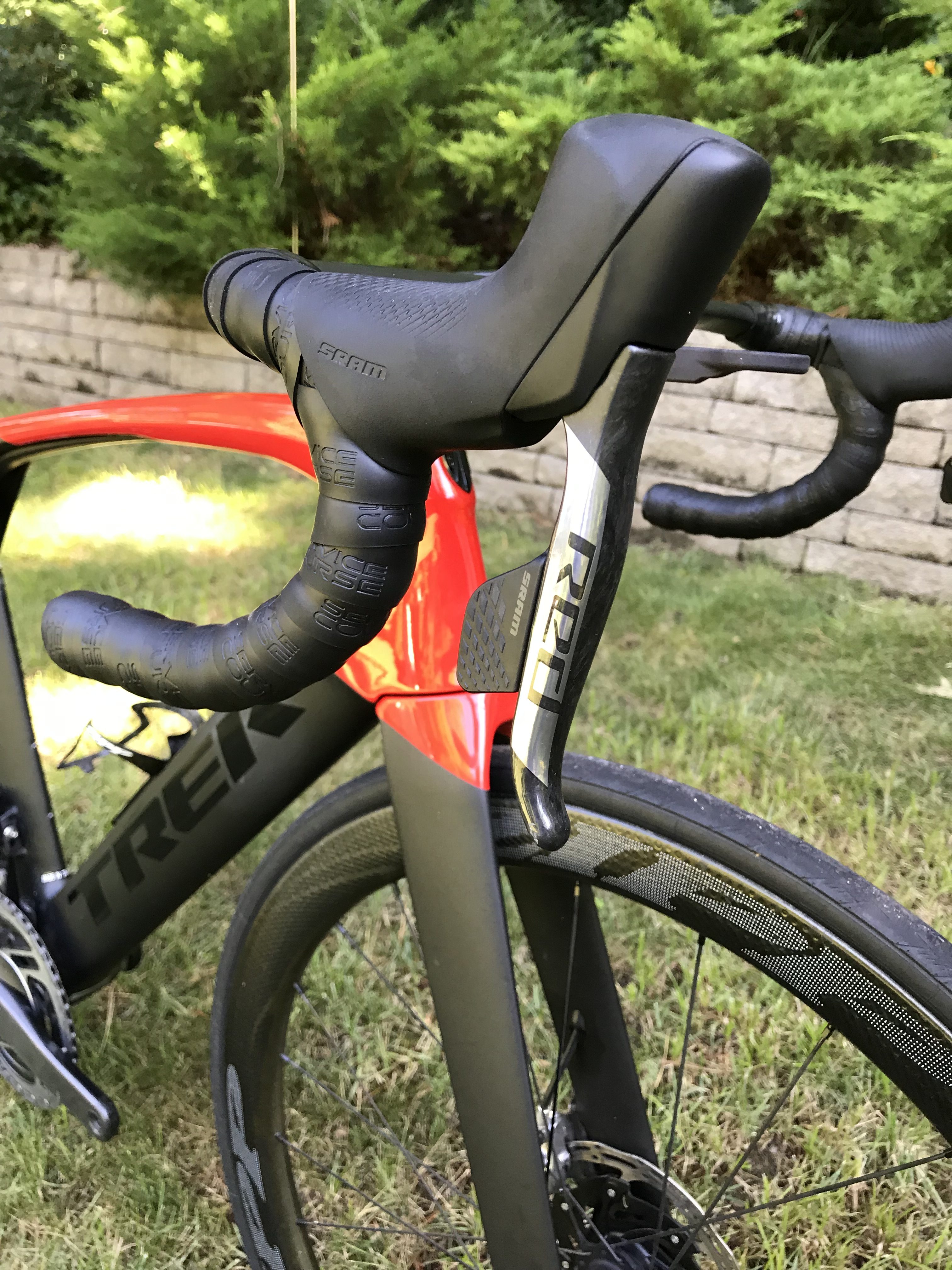
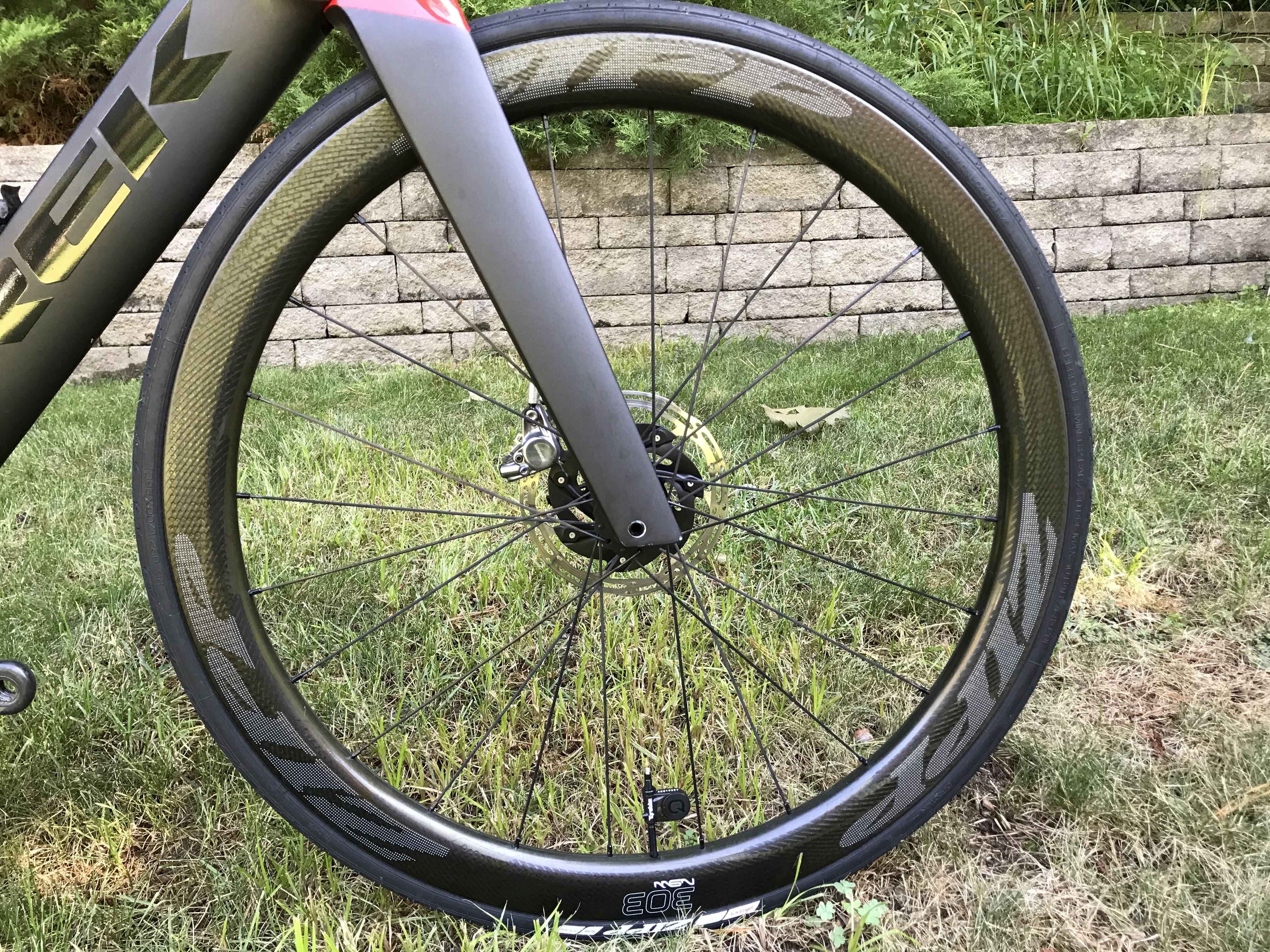
One of the biggest benefits of wireless is maintaining proper shifting after straightening out the shifters post crash (assuming the derailleur hanger hasn’t been bent). The mechanical Sram models weren’t so forgiving during ‘cross races.
Ive just bought one and found its the fastest and best of the expensive bikes my friend works at a top bike shop and on quite morning I can have a test ride on any bike I wish to test them out before a sale . I found this bike flows better and you know a good bike as soon as you get on it if your an old school cyclist of many ! Years ..some feel wooden some are life less it’s had to explain you need to ride the lot…As near all don’t have the privilege of riding everything it’s a case of – liking the look of or an name brand you like or parts ..But you can put Ferrari parts on a mini and it would still be shit.. anyway I liked it the best so hence buying one
Steve, I’m building a Specialized S Works Tarmac SL Disc and debating which wheelset to purchase. I’m 180-185 lbs with lots of power (calves like that guy in the Geico commercial). I ride/live close to the coast between LA and Santa Barbara and a typical Sat ride is 75 miles, with 5,000 feet of climbing. 4-8% grades with climbs that are 5-8 miles. An occasional (once every 3 months) 12% plus grade. I’m focused on an all around wheel such as the new Zipp 303 NSW Disc or Enve 4.5 AR disc (wish there was a non AR version that was lighter!) or Roval CLX 50 Disc or perhaps the new Cadex 42 tubeless Disc (wonder about why their wheels are more narrow compared to Enve and Zipp?). Feedback?
Jeff, sounds like a fun build project. With your weight and power, I’d prioritize stiffness over everything else. Check out my review of the all-around carbon road disc wheelsets here: https://intheknowcycling.com/carbon-disc-wheelset/ Steve
Thank you Steve. Which wheel set do you believe is more stiff: zipp 303 NSW Tubeless Disc? Enve 3.4 Disc? Roval CLX 50 Disc?